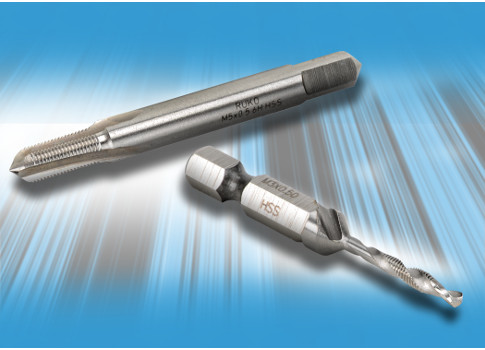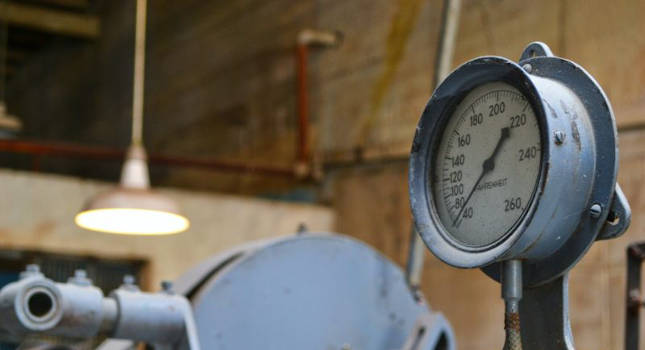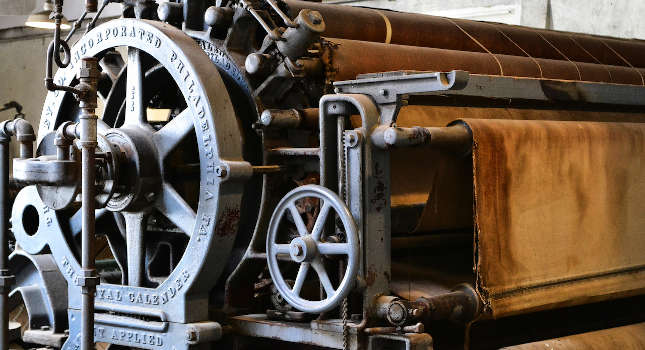An inductor is a device that, when subjected to an increasing electrical current flow, generates a back voltage that opposes this current. Inductance quantifies how much energy an inductor can store. An inductor consists of at least one winding of wire, but it usually has more.
An inductor is a device that, when subjected to an increasing electrical current flow, generates a back voltage that opposes this current. Inductance quantifies how much energy an inductor can store.
An inductor consists of at least one winding of wire, but it usually has more. Depending on the application, the inductor may or may not have a core, which is usually constructed of some type of magnetic material. But some air-core inductors or coils are wound on cardboard, plastic, or other material so that the coil holds its shape.
Inductance and magnetism
The relationship of current, magnetism, and motion is important to the topic of inductance. Electrons have a charge; when they are in motion, current flows. This flow causes a magnetic field. When the charge, and therefore the magnetic field, is set into motion, its creates a force, which can cause movement or exert pressure.
A magnetic domain is a region of a magnetic material that retains a single direction of magnetization. Magnetic lines of flux are also called lines of force and field lines . Moving an electrical conductor, such as a wire, through a magnetic field induces a voltage in the conductor. Passing a current through a conductor generates a magnetic field around the conductor (see “Inductance and magnetism facts and examples”). The strength of the field is proportional to the amount of current. Increasing the current expands the field; decreasing the current causes the field to collapse.
When the current flow is steady, the magnetic field is static. The field is present, but it is neither expanding nor collapsing. However, if the current stops flowing, the field collapses. Because the collapsing magnetic field is moving in the opposite direction as when it was generated, the voltage it induces in the wire has the opposite polarity of the voltage that created it. This phenomenon is known as Lenz’s law of induced current (see “Inductance laws”).
By looping the conductor, the strength of the magnetic field increases proportionally to the number of loops. The faster the magnetic field moves, the higher the induced voltage. Wind the conductor into a coil and the voltage is induced into each loop (Fig. 1). According to Faraday’s law, two loops doubles the voltage, three loops triple the voltage, seven loops induce seven times the voltage, and so on (see “Inductance laws”).
Suppose that a theoretical coil of wire with four loops has current flowing through one loop, which creates a magnetic field around it. This field cuts through the other three loops, inducing a voltage in each of them, but in the opposite polarity of the voltage that made the field originally (Lenz’s law). Current through loop 1 induces an opposing voltage in loops 2, 3, and 4; current in loop 2 induces a voltage in loops 1, 3, and 4; and current in loop 3 induces a voltage in loops 1, 2, and 4. Transformers are based on this principle.
Frequency and inductance
Back electromotive force (emf) is present only while the magnetic field is either expanding or collapsing. If the applied voltage is dc, the magnetic field builds up when it is first applied, and then becomes constant. The back emf is produced only while the strength of the field is increasing. This opposing voltage tries to stop the current flow.
When the dc voltage reaches its peak, the field stops expanding and the induced voltage drops to zero. With the coil, the steady state condition of the magnetic field is like that of the straight piece of wire. There is a field around it — and the number of loops of wire multiplies the strength of the field — but the field lines are not changing. There is no induced voltage unless the magnetic field is changing. When the dc voltage is removed, the collapsing field induces an opposing voltage that tries to keep the current flowing, returning the stored energy (Fig 2).
With ac voltage, the rate of rise of the voltage, and the expansion of the resulting magnetic field, slows as the frequency decreases. Therefore, the induced voltage, which opposes the applied voltage, is lower. Higher frequencies increase the voltage at a faster rate, which expands the resulting magnetic field at a faster rate. This induces a larger opposing voltage. The result is that an inductor creates more opposition to higher frequency voltages than to lower frequency voltages. As frequency of the ac voltage decreases to zero the voltage becomes a dc voltage (no direction change). The opposition to the current flow decreases, leaving the resistance of the wire as the only restriction to the current flow.
How inductance is measured
Inductance is measured in henrys and is normally denoted in formulas by an uppercase L . An inductor’s value quantifies how much energy it can store. One henry (H) is the measure of inductance of a closed circuit that produces 1 V when the current varies 1 A/sec.
Common units of inductance are the henry (H), millihenry (mH or 1/1000 of a henry), and the microhenry (
1 H = 1000 mH = 1,000,000
Inductance increases with more loops of wire, or number of turns. Increasing the loop size also increases inductance value, as does improving the inductive coupling from loop to loop. Arranging the loops so that they are closer in proximity and increasing the magnetic properties of the core are factors that improve inductive coupling. An iron core allows coupling of the magnetic field lines better than air; a donut core shape provides more coupling than a rod core shape.
Inductors vs. capacitors
Inductors and capacitors both store energy. In a dc circuit, when voltage is applied initially, energy begins building, as does the magnetic field. Current flow in the circuit is delayed with respect to when the voltage is applied. You can’t make energy. But you can store it and use it — just not at the same time.
Once the field is built up, the energy causes current to flow in the circuit. When the voltage is removed, the stored energy is released back into the circuit and keeps the current flowing a little longer. The peak value of the current flow lags behind the peak value of the voltage.
The same thing happens in an ac circuit, except it reacts periodically according to and depending on the frequency of the ac. During the firstnt flow drops, and then the field collapses, inducing current flow. The current flow is delayed ¼ of a cycle after the voltage (Fig. 3).
In a capacitor, on the other hand, the circuit current flows immediately, starting to charge the capacitor. As the charge increases, the voltage across the capacitor increases. During the second
With inductors, current lags the voltage; voltage leads the current. With capacitors, current leads voltage; voltage lags the current. Regardless of which explanation you use, if you apply it to a pure inductance, it will be exactly the opposite of a pure capacitance.
In the same circuit, a capacitor stores a charge while the magnetic field around an inductor is collapsing. The capacitor discharges while the inductor’s magnetic field is expanding. This is the basis for tuned circuits and frequency-specific filters.
Inductors can be used in electrical and electronic circuits in the form of coils, chokes, transformers, solenoids, relays, and filters. Combined with capacitors, inductors are used for tuned circuits, filters, noise suppression, and other applications.
Inductance and magnetism facts and examples
Fact
Example
When a force moves a conductor through a magnetic field it induces current flow in the wire.
Sound is the force that moves a diaphragm attached to a coil moving through a magnetic field. The result is a microphone.
A stream of water or steam is the force that spins a turbine with its shaft connected to coils moving in a magnetic field. The result is a power generator.
Current flow through a conductor in an external magnetic field creates a force on the conductor.
Current through a voice coil transfers the resulting force to a diaphragm or cone. The result is a loudspeaker.
Current through coils mounted on a shaft causes rotation. The result is a motor.
Current flow through a conductor will create a magnetic field and exert a force.
Current through a coil wound on a fixed iron rod produces external force. The result is an electromagnet.
Current through a coil wound on a moveable iron rod produces internal force that moves the rod. The result is a solenoid.
Author Information
Wendell Rice, Instrument and Controls Engineer, Parsons Infrastructure & Technology, Pasadena, CA, has been a controls engineer for more than 25 yr. He can be reached at 765-245-5357 or [email protected] . Mr. Rice currently is assigned to a project in Newport, IN, that provides support for the U. S. Army’s chemical weapon neutralization program.
Inductance laws
Lenz — The voltage induced in a conductor will oppose the force that caused it.
Faraday — The amount of induced voltage is proportional to how fast the flux lines cut through the conductor, and the number of turns of wire.



